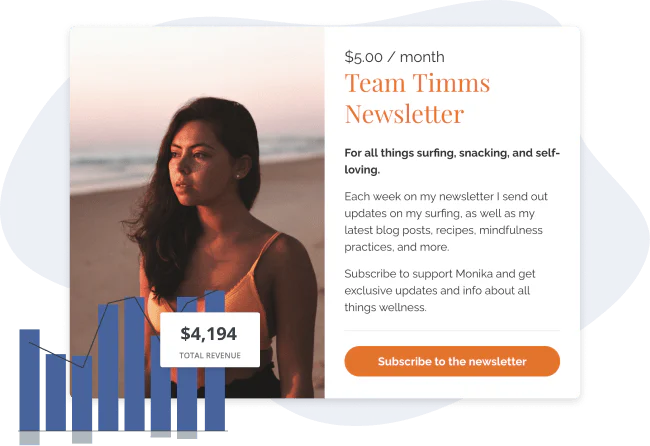In this Article
Your ebook is ready for launch. The last step: giving it a price tag. Easy, right?
To price your ebook, you might want to lean on your gut feeling or just “charge what you’re worth.”
The problem?
Those numbers don’t consider your reader’s needs and expectations.
The wrong price will push readers away; the right one will set your ebook up for long-term success. Here’s an easy ebook pricing process to follow.
The 5 key factors that influence ebook pricing
The average price of an ebook ranges from $9 to $19. But many ebooks sell for $5, and others have a price tag of $100 or more. How can that be? With other products, especially physical products, the cost of production is usually the culprit.
But the cost of creating an ebook doesn’t vary as much; in fact, you can create yours for $0. You can design it using an ebook template or with a low-cost design tool—just don’t forget to account for the time you’ll invest in writing the ebook.
The key to ebook pricing is in your industry, who you’re selling to, your ebook’s perceived value, length, and where you sell it.
1. The industry you’re in
First, consider the field you’re in. Some industries don’t have many quality resources available (including ebooks) because they’re more complex and take longer to acquire knowledge—think technical fields like engineering. Creators in this field can naturally charge more for ebooks.
On the other hand, there are fields with lots of creators and many free or low-cost resources, including videos, templates, ebooks, and email courses. You’ll find topics like fitness and cooking in this situation, where you might drive more sales by pricing your ebook lower.
2. Who you’re selling to
Another factor is the type of person you’re selling to and their context. Consider questions like:
- How does my ideal reader usually make their purchase decision?
- Do they have a budget available to spend on education?
- Are they more willing to invest time searching for the right resources or invest money to get to a solution quicker?
- What other resources and products (physical and digital) do they purchase to solve a challenge or meet a goal they have?
The answers to these questions should help you answer the most important question: how much are they willing to spend on an ebook?
For example, a home improvement creator can take into account their audience’s buying habits around items like tools, paint, and building materials. If they often invest in those products, they might be less sensitive to a higher-priced ebook that will solve their exact problem.
3. The perceived value of your ebook
Let’s consider two different titles for the same hypothetical ebook:
- “10 time management strategies for freelancers”
- “Transform your workweek as a freelancer and save 8 hours each week”
The ebook content is the same. So are the sections. But the outcome is communicated in two very different ways.
The first title implies a list of strategies you can choose from, try, and either keep using or try a different one. The second one paints a vivid picture of a tangible, desirable outcome. The reader can almost feel the satisfaction of following advice from this ebook.
Ask yourself: what are your target readers willing to spend money on to get better at this topic? How you communicate the reader’s end goal matters, and the price needs to match up with their perceived value of that end goal.
4. The length of your ebook
If two books cover the same topic, but one is 30 pages long and the other is 150, the price should reflect that.
But there’s another thing you need to consider: the expectations of your readers based on the ebook length and whether the ebook price matches that.
For example, you could sell an ebook on how to get a jumpstart on something and achieve an outcome quickly, like building a morning routine or creating an easy-to-follow weekly meal plan. If you make that ebook 150 pages long, the length won’t increase its perceived value—it will do the opposite because it throws out the ‘quick’ element.
Your ebook length needs to match up with the promise of your ebook title.
5. Where you sell your ebook
Finally, consider the platform or context through which you’ll sell your ebook. There are two reasons for this, especially if you’re considering using retailers like Amazon or Apple Books:
First, by selling on such a large platform, the pricing strategy of other ebooks may end up driving yours. Customers will compare ebooks that cover similar topics, and if others sell for $6, you’ll struggle to ask for a much higher price than that.
And second, selling through retailers comes with a fine print. You’ll have to give up between 35% and 70% (!) of your ebook price just to pay the platform’s fees, which will significantly cut into your income even if you do manage to price your ebook as highly as you want it to.
A better alternative is selling your ebook through channels you own, like your website and email list, using a service like Kit Commerce. With a 3.5% + $0.30 fee per transaction, you get to make way more profit and price your ebook exactly the way you want to.

The 5-step strategy to find the right price for your ebook
Here are the exact steps you can follow to choose the right ebook price.
1. Research the prices for ebooks in your industry
First, look at how others in your industry are pricing their ebooks.
This will help you get a solid feeling of what your potential ebook buyers see when they research their options.
Tactic #1: Run targeted Google searches
On Google, enter the search term “your topic” “ebook” (include the quotation marks). You can repeat this with different phrasings of your topic.
List at least 10 paid ebooks you find. You can track them in a Google Sheet, but even a simple note will do. Then, take note:
- What’s the lowest and highest ebook price you can find?
- What’s the average ebook price?
This gives you a great range you can work from to choose your price.
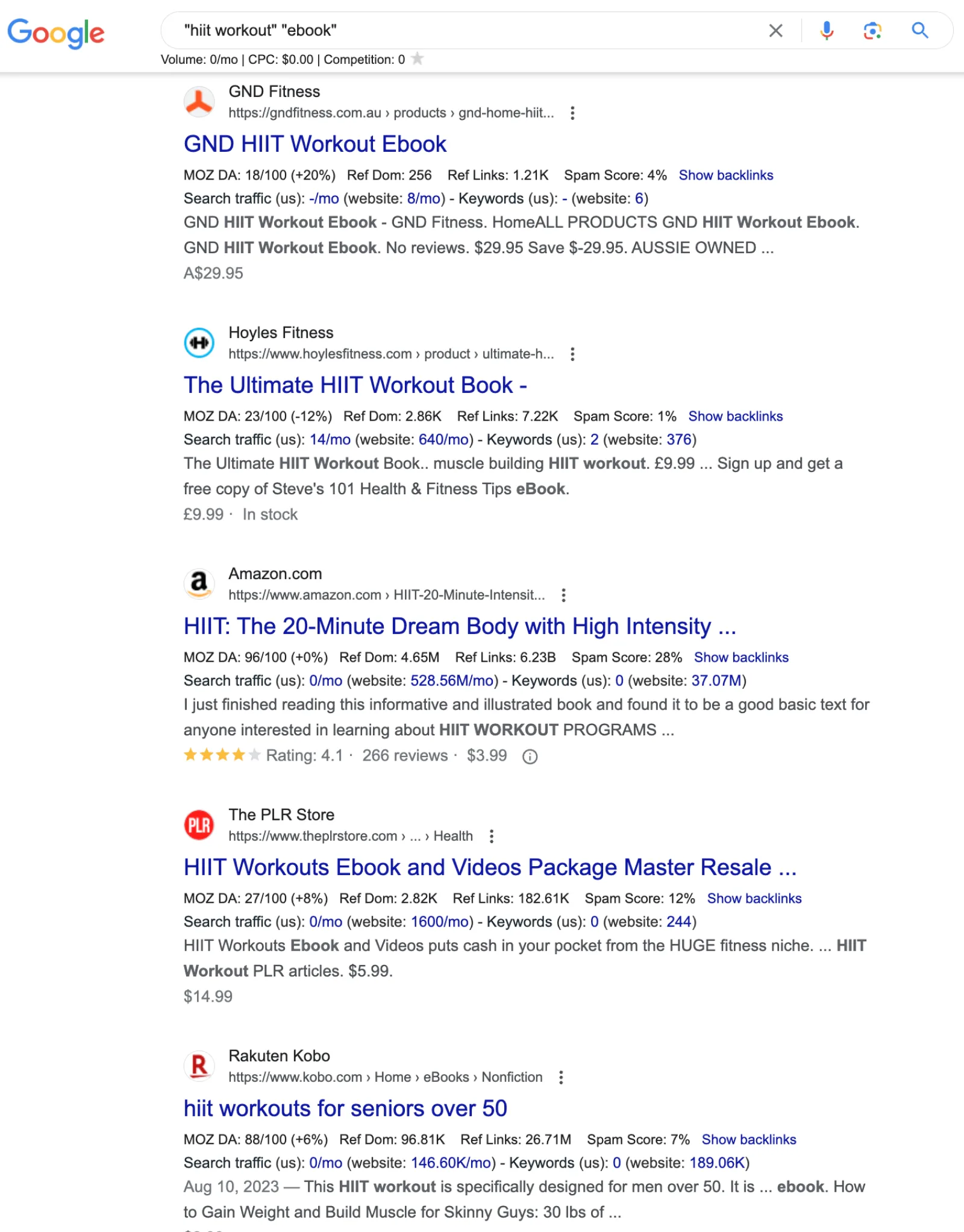
Sample search for HIIT workout ebooks
Targeted Google searches are also a great way to notice details around industry-specific pricing and your target reader’s budget. Are you selling to families on a budget or to high-earning business owners? How does that influence their expectations of your ebook price? There’s a reason a fitness ebook is priced at £10 (i.e. $12-$13), while a technical ebook about Ruby on Rails is $39.
Tactic #2: Look at Amazon ebook prices
Check out the average ebook price for your industry and topic on Amazon. Find this in Amazon > Kindle E-readers & Books > Kindle Books, then search for your category.
Don’t just look at the prices of best-selling books—they’re often best-selling because they’ve been heavily discounted—but also those with many reviews and high ratings.
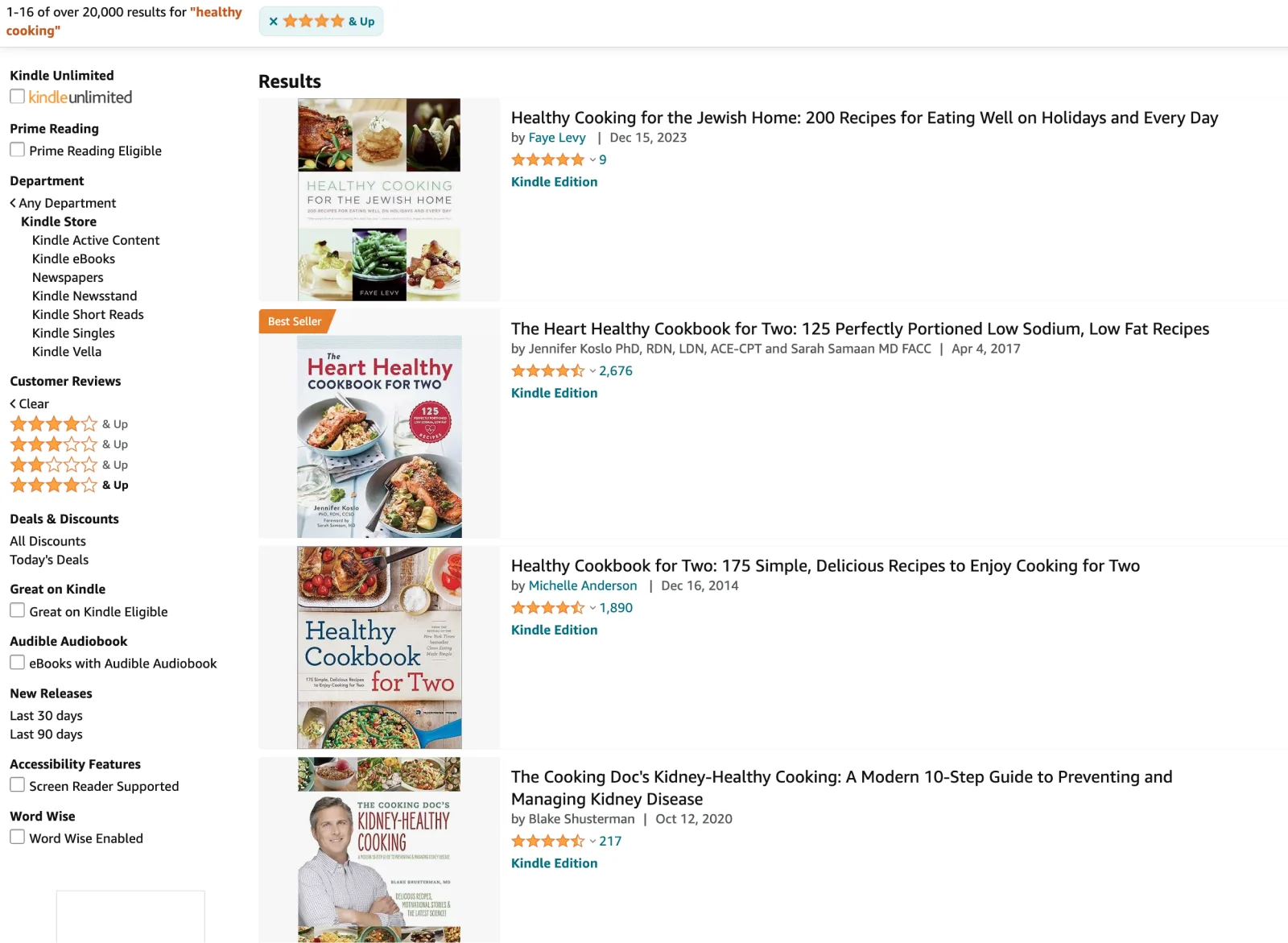
Healthy cooking Kindle books with high ratings on Amazon. Image via Amazon
Amazon ebook prices shouldn’t be your main price guide, but it will show you potential outliers—especially ebooks that are priced more than the average book on the topic yet sell well and have great ratings.
2. Survey your existing audience
Your audience will tell you a lot about how you should price your ebook.
Here’s the trick: don’t go to them with the question: “How much would you pay for an ebook on [topic]?”
The truth is, unless they’re buying ebooks on that topic regularly, they can’t tell for sure.
Instead, ask them about what they’re currently buying related to your field to solve their challenges and improve their skills. Give them prompts to get as detailed answers as possible. Ask questions such as:
- Have you bought any online courses about [topic]? If so, which one(s)?
- Which books have you read about [topic], if any?
- Have you hired a professional to help you with [topic] (e.g. coach, consultant, etc.)? If so, what was your experience?
- Have you bought any physical products related to [topic]?
If you have an email list (of any size), send your survey to them. Use a survey tool like SurveyMonkey to do this, or write a simple email and ask them just like you would a friend.
If you don’t have an email list yet but have a social following, lean on social networks to poll your audience. X/Twitter polls, Instagram polls and questions, and LinkedIn polls are all great tools to ask your audience about the solutions they buy to solve their pain points.
Keep track of all responses, including direct messages—every insight is valuable!
3. Focus on the value your ebook provides
You now have a price range you can work from to define your price. Now, think about the outcome of your book we talked about earlier. Is your reader looking for…
- More income?
- Achieving something faster?
- Removing a problem?
- Achieving better health?
- Building better habits?
Consider how these questions influence your reader long-term. For example, Jen A. Miller is a freelance writer and author who helps other writers find success. The outcome of her ebook isn’t just to become a freelancer—it’s to build a steady, successful, profitable, and less stressful writing life.
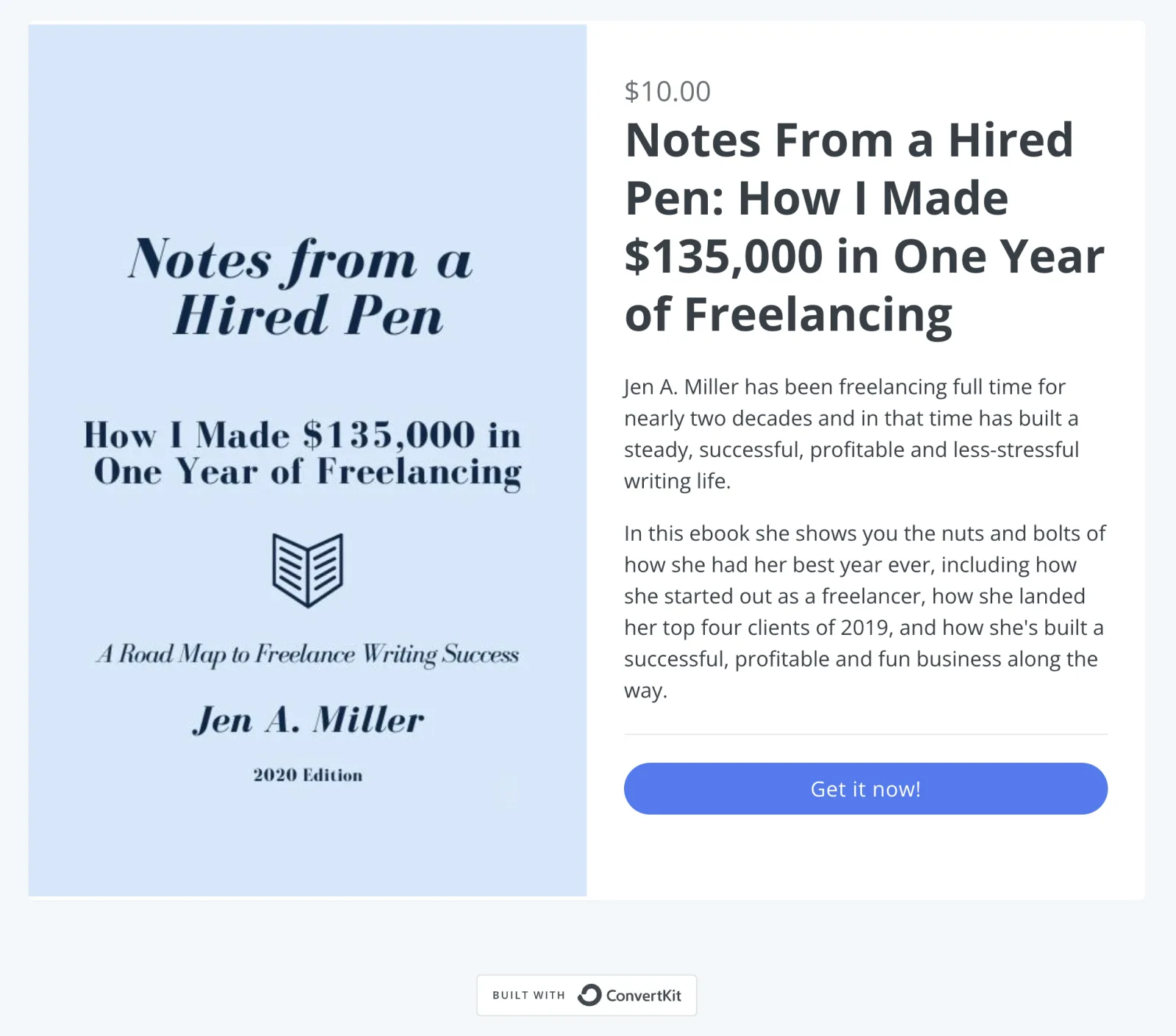
Jen A. Miller’s ebook and its outcome. Image via Jen. A Miller
Based on the ebook price range you discovered in step 1, and the solutions your audience already buys you learned in step 2, how does your ebook outcome impact your ebook pricing?
4. Consider ebook add-ons and price anchoring
You can use ebook add-ons in two tactics when it comes to pricing an ebook.
Tactic #1: Sprinkle in extra materials
You can increase the perceived value of your ebook by adding extra materials. This can turn your ebook from “just a PDF” into a bundle that will reduce the risk of buying the ebook for your customer.
Add-ons can be video walkthroughs, live streams, recorded interviews with experts, templates, cheat sheets, and more. This approach is how Nathan Barry, Kit’s founder and author of the ebook Authority is able to charge $199 for it:
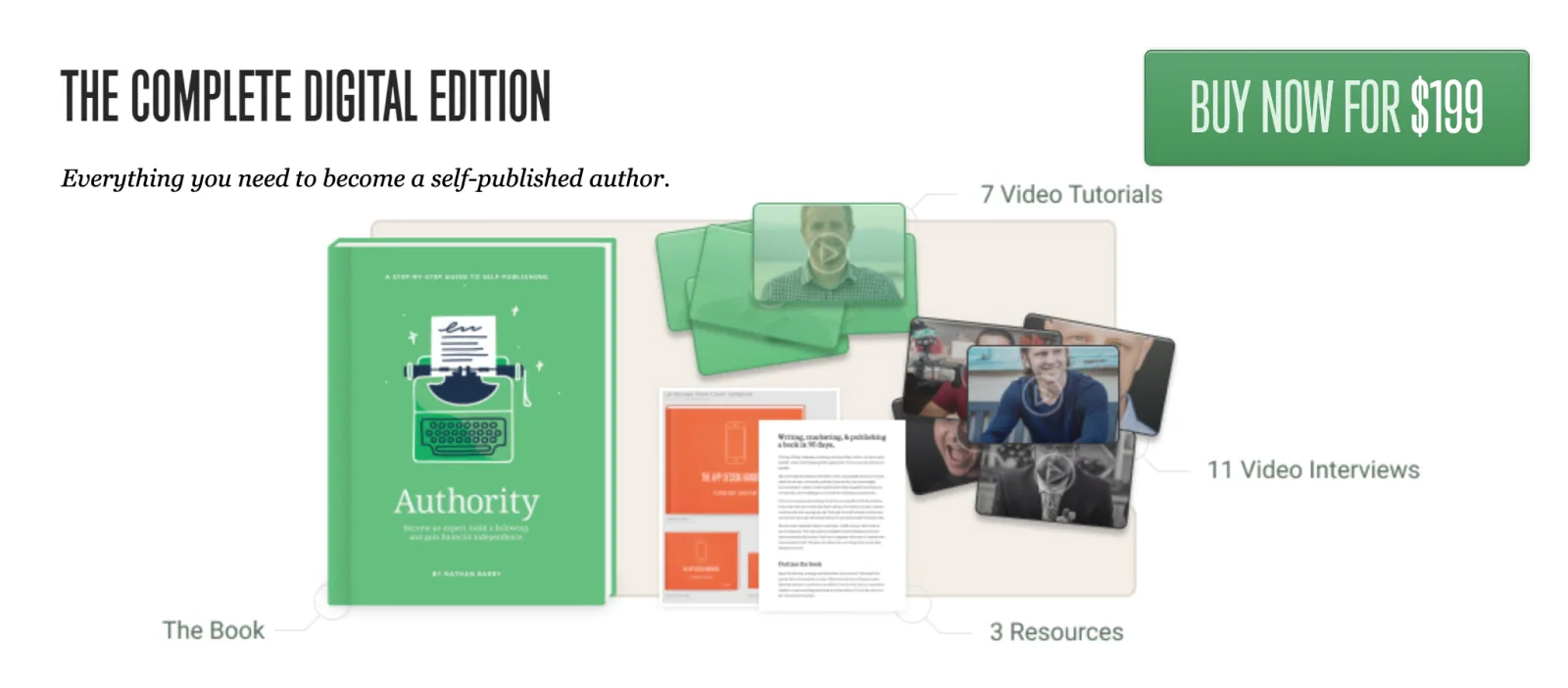
Nathan Barry’s Authority ebook and digital resources. Image via Nathan Barry
Tactic #2: Use add-ons as price anchoring
Add-ons can also help you present your ebook in the best light possible through price anchoring. Anchoring is a cognitive bias, a tendency to rely on the first piece of information offered when making decisions.
For your ebook, this means you can offer a premium version next to it. For example, your ebook price is $40, but you also offer a bundle with a 30-minute coaching call for $150. Your customers may see the ebook-only version as a bargain next to the premium version.
A great example of this is a previous version of the Ruby on Rails ebook by Learn Enough (now available as part of a subscription). The ebook was priced at $39, but there was also an option to buy screencasts without or with the ebook for $149 and $169.
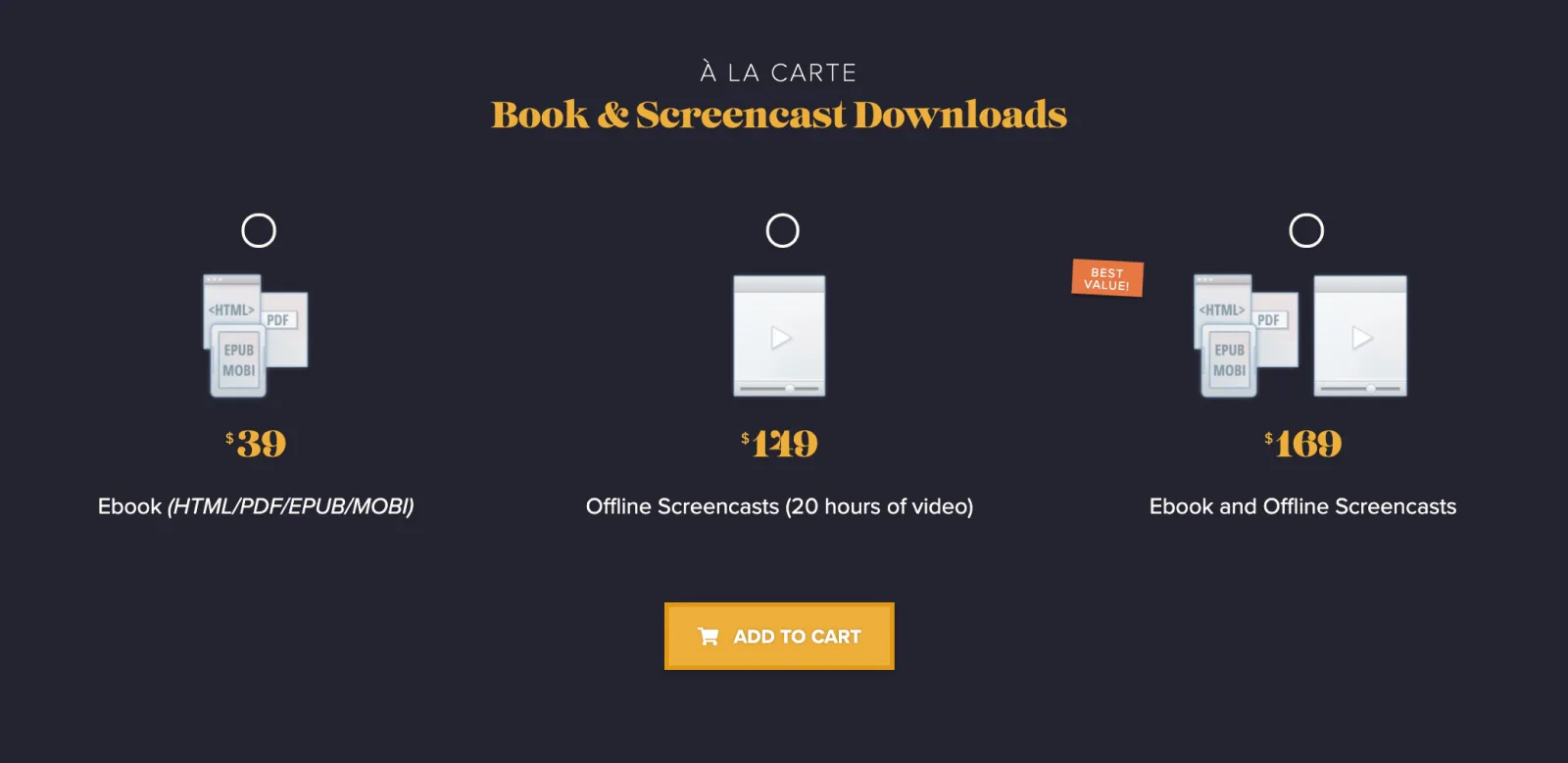
Ebook price anchoring with additional screencasts as a premium offer. Image via Learn Enough
5. Review sales data and customer feedback
Finally, the market will tell you everything you need to know about ebook pricing. You just need to listen.
Here are three ways you can do that:
Tactic #1: Prelaunch your ebook with a limited-time-only price
Before your official launch, offer a discount for early buyers, and be transparent about your plan to increase the price once you launch the ebook.
This gives you the opportunity to survey people who purchase your ebook and explore pricing options.
And don’t forget—a coming soon page is an excellent way to generate early buzz for your ebook!
Tactic #2: Offer tiered pricing and increase the price every X sales
When your price goes up, say, every 20 sales, sales will slow down when the pricing has come close to its potential maximum.
This is what Steph Smith did with Doing Content Right, and it became a huge success (the ebook has since evolved into a course). She was also told by her early customers to charge more, which helped validate her idea and show the real value of her ebook to people who were still on the fence.
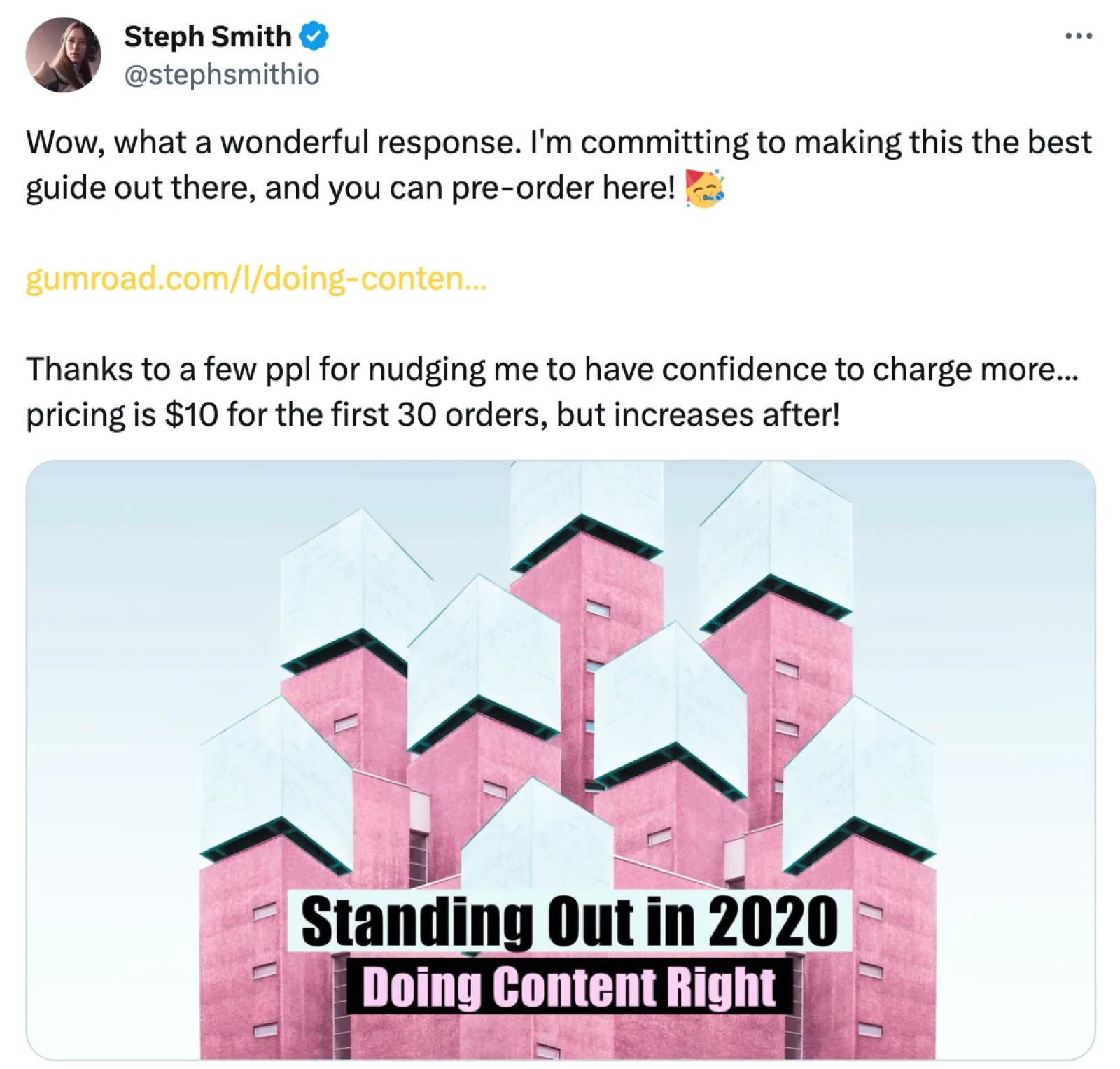
Steph Smith increased the price of her ebook by $5 after each 30 copies sold. Image via Steph Smith on X/Twitter
Tactic #3: Choose one consistent price and ask for customer feedback
As sales roll in, ask your customers about the value they received based on what they paid for the ebook, their expectations, and the purchases they would usually make to solve problems.
This is a great opportunity to also ask for testimonials and suggestions for improvements—people love to feel heard, and you’ll build deeper trust from your customers by doing this.
Bonus tip if you’re stuck: Try Pay What You Want pricing
There’s a way to explore what really works without surveys or tiered pricing, and that’s Pay What You Want pricing.
It’s exactly what it says in its name: a pricing strategy that works wonders when you’re not sure how to price an ebook or another product when launching it for the first time.
In Kit, you can set the minimum price, which means you’ll avoid undercharging or giving your ebook away for free. When you start setting up your ebook sales page with Kit Commerce, it’s as simple as clicking on the Pay what you want option and entering a minimum price if you want to:

Setting up Pay what you want ebook pricing in Kit
Ebook price tag examples from thriving creators
Still unsure how to price your ebook? Lean on these three creator examples as inspiration (hint: you’ll see there’s no single, ideal ebook price).
Example #1: Simply Stacie sells her ebook for $6.99 USD
Stacie Vaughan, better known to the foodie world as Simply Stacie, is a food blogger and a Kit creator. She priced her dessert ebook at $6.99:

Simply Stacie’s chocolate desserts ebook. Image via Simply Stacie
When you take into account the size of Stacie’s audience, this pricing makes sense. Stacie has over 12,000 Instagram followers, gets over 10 million monthly impressions on Pinterest, with a large email list to boot. With lower-end prices, volume is key—and this price makes buying her ebook an easy choice for thousands of her followers and subscribers.
Example #2: The Kidney Dietitian priced their ebook at $29.95 USD
Melanie Betz is a Registered Dietitian behind The Kidney Dietitian, where she shares recipes, guides, and products aimed at kidney stone prevention. The price of one of her ebooks, The Kidney Stone Diet Guide, is $29.95:
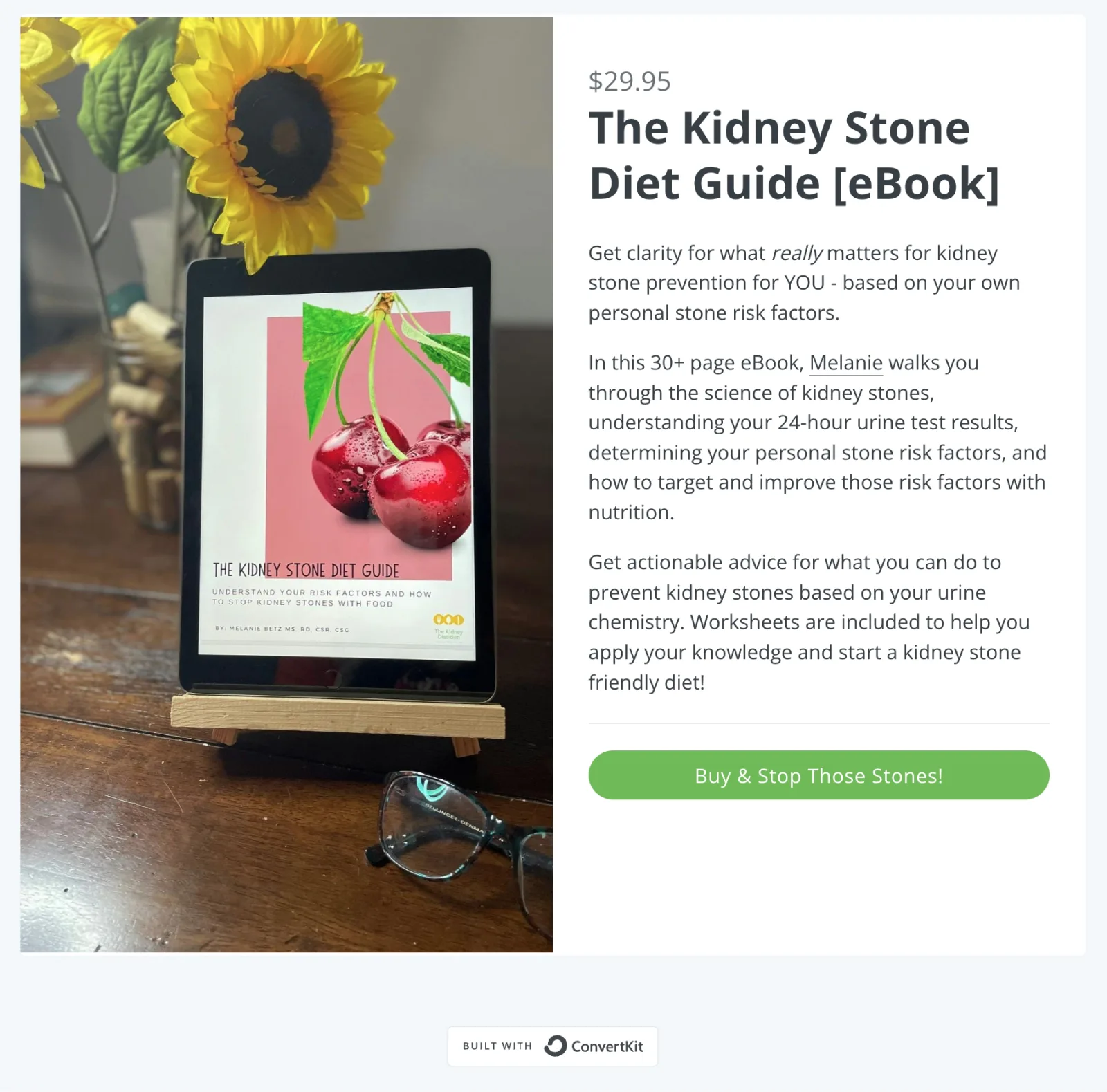
The Kidney Dietitian’s kidney stone diet guide. Image via The Kidney Dietitian
She sells several ebooks and courses, each with a specific focus, format, and approach—and with slightly different price points. This ebook price is the sweet spot between an accessible purchase and a price point that communicates deeper value for a target reader.
Example #3: Learn Robotics charges $99 USD for their ebook
Learn Robotics offers an online certification program for beginners and a robotics mentorship program for engineers. One of its ebooks about the mBot2 Robot sells for $99:

Learn Robotics’ mBot2 Robot ebook. Image via Learn Robotics
Learn Robotics offers a full range of prices from $17 to $99, the latter providing advanced training for students in instantly available digital files. Ebooks about robotics sell for $60 and higher on Amazon, so Learn Robotics positioned this in-depth resource perfectly.
You’re ready to sell your ebook—and lots of it
Now your ebook’s ready and you have a pricing strategy to set it up for success.
One last thing: you need a platform to sell your ebook directly from your website and keep as much of your ebook revenue as possible. Not just that—you can sell to an audience that already trusts you.
Ready to get started? Your free Kit account awaits, so you can start selling your ebook today.


